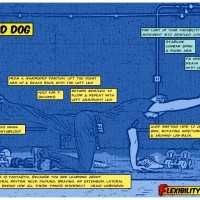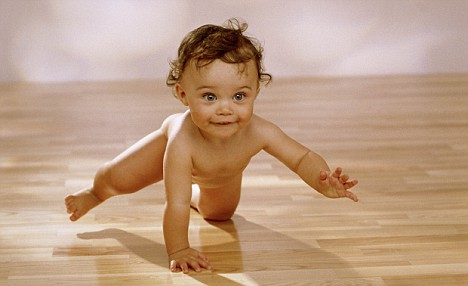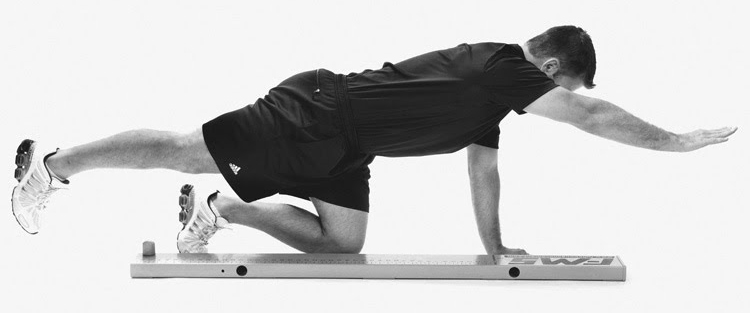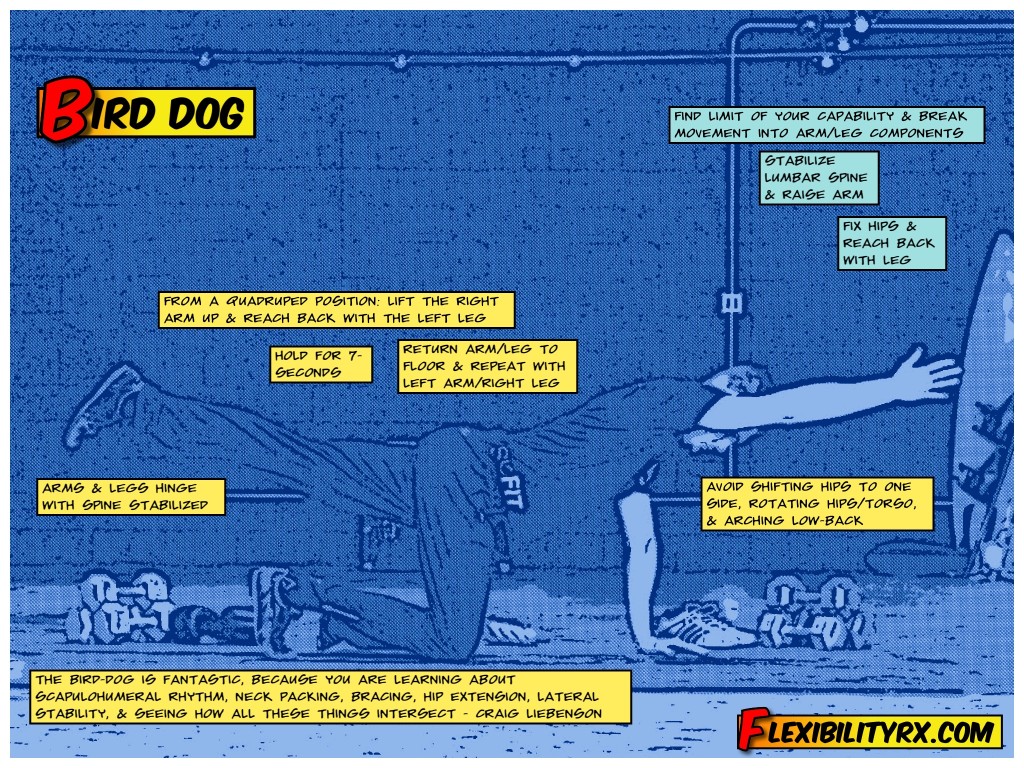
The Bird-Dog Exercise & Rotary Stability
The bird-dog exercise is a movement that mimics the developmental pattern of crawling. Crawling involves opposite arm and leg movement – outward from a stabilized core. The integration of shoulder flexion and hip extension with core stability is a requirement of many movements found in the gym.
What is Core-to-Extremity Movement?
The inner core consists of the diaphragm, abdominals, pelvic floor, and spinal errectors. The diaphragm contracts first before any movement of the arm or leg. The stability of the torso is referred to as proximal stability, which allows for distal arm and leg movement.
Poor core stability can limit both shoulder flexion and hip flexion. When the muscles around the spine do not provide adequate stability, muscle function and joint position will be compromised at the hip and shoulder.
Developmental movement patterns (crawling, lunging, squatting) are all core-to-extremity – the muscles of the core stabilize the trunk before arm and leg movement occur. This fixed point of the core, which provides a stable base for muscles to control the arms and legs is referred to as the ‘punctum fixum’.
Stability During Crawling
Crawling requires rotary stability to prevent rotation of the hips and spine during movement of the arm and legs. The half-kneeling position of the bird-dog requires lateral stability to prevent lateral movement of the hips. Maintaining a neutral lumbar curve (preventing hyperextension or arching of the low-back) requires anterior core stability from the abdominals.

The bird-dog is a great way to integrate stability and flexibility during a basic movement pattern for better motor control during more complex movement patterns.
Craig Liebenson explains,
“The bird-dog is fantastic, because you are learning about scapulohumeral rhythm, neck packing, bracing, hip extension, lateral stability, and seeing how all these things intersect.”
Switching Gears: Total Body Tension & Fluid Movement
Lifting weights to get stronger is about capacity, whereas the ability to execute fundamental movement patterns is about competency. Fundamental stability exercises like the bird-dog that teach competency, are also great for learning to use a low-threshold strategy of movement.
Low-Threshold Strategy: Slow, tonic, local stabilizer, stabilizing muscle contractions that are for low-load tasks and reflexive postural control. This is necessary for joint centration.
High-Threshold Strategy: Fast, phasic, prime mover, global mobilizer, mobilizing muscle contractions that are for high-load tasks and force production. This is necessary for strength training.
(Definitions taken this great blog by Aaron Swanson)

A high-threshold strategy is generally used during strength training when the goal is to increase capacity through squatting heavy and deadlifting. When high-threshold strategies are used during basic movements – breathing is dysfunctional, stability is compromised, and mobility is impaired.
Athletes need to be able to switch gears between strategies – creating enough tension during a squat and having the flexibility and stability to perform basic movement patterns with a high level of competency. The ability to demonstrate low-threshold strategies is a big part of movement competency.
Exercises like the overhead squat, snatch, and clean are all great ways of improving core stability. However, athletes that have poor core stability and have a hard time keeping a neutral low-back position need to train core stability during low-level exercises before integrating stability back into complex movements.
Assessing Rotary Stability
Many gym members are familiar with the bird-dog exercise used in yoga classes. How an exercise is used and who uses it, changes its function and outcome. The bird-dog position is used as part of the rotary stability test of the functional movement screen (FMS) and as a learning tool for teaching athletes how to stabilize effectively with a low-threshold strategy.

(image from functional movement.com)
The bird-dog requires rotary stability throughout to stabilize the hips and torso during the arm and leg movement. The abdominal obliques prevent rotation and also contribute to posterior pelvic tilt to prevent hyperextension of the low-back as the leg reaches.
It is important for athletes to understand the importance of utilizing movements that employ low-level strategies. These types of exercises can be used as correctives or on a regular basis as part of a warmup. Charlie Weingroff nicely explains,
“There is a big difference between Rotary Stability as per the FMS and Anti-Rotation conditioning as per these excellent exercises that we use. They are not the same.
Rotary Stability patterns employ the soft core, the inner core, the proper motor control of timing that allows us to move bodyweight very spider-like and effortless. Anti-Rotation makes you savagely strong to move how you move faster and stronger.”
The Neurodevelopmental Perspective
Crawling is a developmental stage of movement development that precedes the half-kneeling and lunge positions. Crawling exercises like the bird-dog are great for restoring movement patterns, mobility, and stability.
Charlie Weingroff explains that the rotary stability screen is meant to assess rotary stability – during a developmental movement pattern – to see if an athlete can demonstrate a low-level strategy.
“So as the aim is to yield the absolute most discriminatory movement screening tool, if we look at rotary stability 3 and 2 positions, and in that order because we roll before we crawl.
There is a level of screening very neurologically deep and discerning to see if indeed we have a very challenging display of the two foundations we need to move. Maybe a little more to the FMS and Rotary Stability than you might have known before.”
Ipsilateral = Rolling, Throwing, Leaning in most agility, some Sitting
Contralateral = Crawling, Running/Walking, Reaching Transitioning
– Kevin Kula, “The Flexibility Coach” – Creator of FlexibilityRx™
Related Resources
Aaron Swanson: Low vs. High Threshold Strategy (link)
Bird Dog Exercise with Craig Liebenson by CE4You (link)
Bird Dog Workshop and Corrections by Craig Liebenson at CE4You (link)
Craig Liebenson: Proximal Stability for Distal Mobility – The Bird Dog (link)
Dean Somerset: Improving the Functional Movement Screen (link)
Smart Group Training: Rotary Stability (Red to Green Series) (link)
Charlie Weingroff: Behind the Walls of FMS Rotary Stability (link)
Tags: bird-dog exercise, core stability, Craig Liebenson, FMS, Functional Movement Screen, glute activation, mobility warm-up drills, movement screen, rotary stability test, rotatory stability exercises, Stuart McGill

Leave A Reply (No comments so far)
You must be logged in to post a comment.
No comments yet